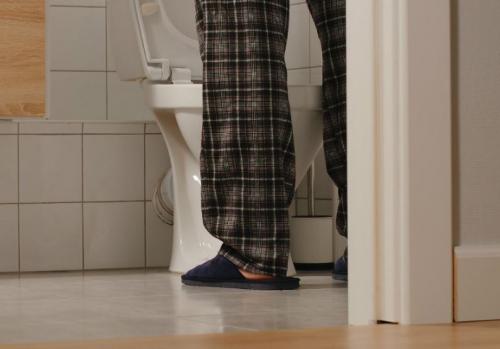
A team of researchers has developed a new artificial intelligence that can detect UTI in individuals with dementia. They believe it could help reduce one of the top causes of hospitalizations for patients living with dementia: UTI (urinary tract infection).
The researchers, from the University of Surrey and the Surrey and Borders Partnership NHS Foundation Trust, wrote about their work in the journal PLOS ONE (citation below). The authors were Shirin Enshaeifar, Ahmed Zoha, Severin Skillman, Andreas Markides, Sahr Thomas Acton, Tarek Elsaleh, Mark Kenny, Helen Rostill, Ramin Nilforooshan, and Payam Barnaghi.
The University of Surrey researchers work at the Centre for Vision, Speech and Signal Processing (CVSSP).
Urinary tract infection
Urinary Tract Infection (UTI) is an infection in any part of the patient’s urinary system. In other words, an infection in the kidneys, ureters, bladder, and urethra.
Symptoms include a burning sensation when urinating, a strong and persistent urge to urinate, and urinating often (small amounts). The urine may also be cloudy, strong-smelling, and red/pink or cola coloured (signs of blood).
The authors explain how, in an NHS clinical trial, they used Non-negative Matrix Factorization to find hidden clues for possible urinary tract infection cases. They then used new machine learning algorithms to identify early symptoms of UTI.
Part of the TIHM for dementia project
The experiment was part of the TIHM for dementia project. TIHM stands for Technology Integrated Health Management. The project allowed clinicians to monitor the health of individuals with dementia (living at home) remotely.
Monitoring was possible thanks to a network of enabled devices, including vital body signal monitoring devices and environmental and activity monitoring sensors.
Machine learning solutions analysed data that streamed from these devices. All identified health problems were flagged on a digital dashboard. A clinical monitoring team then responded.

Growing number of people living with dementia
The World Health Organization says that approximately 50 million people globally have dementia. It expects this number to reach 82 million and 152 million by 2030 and 2050 respectively.
People with dementia in the UK occupy one in four hospital beds. According to the Alzheimer’s Society, 22% of these hospital admissions are deemed to be preventable.
Comments by team members
Co-author, Payam Barnaghi, a Professor of Machine Intelligence at CVSSP, said:
“Urinary tract infections are one of the most common reasons why people living with dementia go into hospital.”
“We have developed a tool that is able to identify the risk of UTIs so it is then possible to treat them early. We are confident our algorithm will be a valuable tool for healthcare professionals, allowing them to produce more effective and personalised plans for patients.”
Co-author, Dr Shirin Enshaeifar, Senior Research Fellow at CVSSP and Deputy Technical Lead for TIHM Project, said:
“I am delighted to see that the algorithms we have designed have an impact on improving the healthcare of people with dementia and providing a tool for clinicians to offer better support to their patients.”
Regarding machine learning, Professor Adrian Hilton, Director of CVSSP, said:
“This development hints at the incredible potential of Professor Barnaghi’s research here at CVSSP. Machine learning could provide improved care for people living with dementia to remain at home, reducing hospitalization and helping the NHS to free up bed space.”
An Internet of Things using machine learning
The authors said that they aim to create an Internet of Things led system that uses machine learning. The system would alert doctors to potential health problems. Clinicians could then step in early and treat the patient.
The Internet of Things (IoT) is a system of interrelated devices, people, machines, objects, animals, etc., that communicate with one another. Your car, for example, communicates directly with your house. Your house communicates with dozens of different devices within the home and outside.
Apart from reducing pressure on the NHS, the system would improve the lives of people with dementia. Their carers (USA: caregivers) would also benefit significantly.
Co-author, Professor Helen Rostill, Director of Innovation and Development at Surrey and Borders Partnership NHS Foundation Trust, said:
“The TIHM for dementia study is a collaborative project that has brought together the NHS, academia, and industry to transform support for people with dementia living at home and their carers.”
Artificial intelligence
AI or artificial intelligence refers to software that can make robots and computers think like humans. It also makes them behave like humans.
AI contrasts with our natural intelligence. Some experts say that it is AI only when it performs at least as well as a human. ‘Perform’ refers to human computational capacity, speed, and accuracy.
Citation
“Machine learning methods for detecting urinary tract infection and analysing daily living activities in people with dementia,” Shirin Enshaeifar, Ahmed Zoha, Severin Skillman, Andreas Markides, Sahr Thomas Acton, Tarek Elsaleh, Mark Kenny, Helen Rostill, Ramin Nilforooshan, and Payam Barnaghi. PLOS ONE 14(1): e0209909. DOI: https://doi.org/10.1371/journal.pone.0209909.

